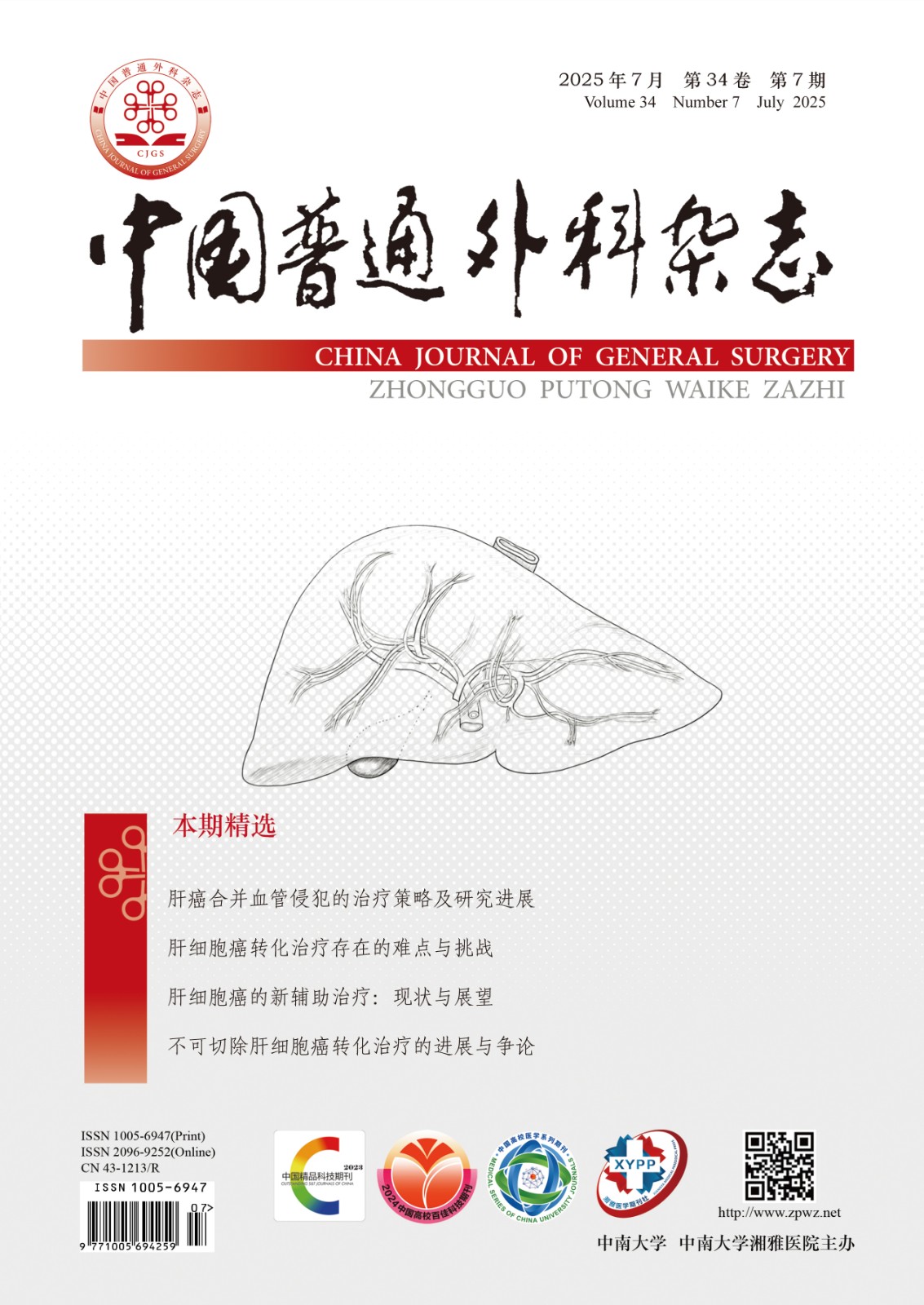Abstract:
Objective: To determine the risk factors for tumor recurrence and metastasis in patients with intrahepatic cholangiocarcinoma (IHCC) after radical resection. Methods: The clinicopathologic data of 125 IHCC patients undergoing radical resection between January 2002 and May 2008 were collected and reviewed. The postoperative tumor-free survival rate and unfavorable factors affecting postoperative tumor-free survival were analyzed and meanwhile, the relations of CA19-9 level with clinicopathologic actors were also analyzed. Results: The follow-up rate was 81% for the entire group of patients until May 2013 with a median follow-up of 30 months, and 109 patients developed recurrence or metastasis. The cumulative 1-, 3- and 5-year tumor-free survival rate for the entire group was 61.6%, 27.2% and 12.8%, respectively. Multivariate analysis showed that lymph node metastasis (RR=3.990, 95% CI=2.383-6.679, P<0.001), tumor size larger than 5 cm (RR=1.78, 95% CI=1.190-2.663, P=0.005), CA19-9 level over 200 U/mL (RR=1.734, 95% CI=1.138-2.642, P=0.01) and multiple lesions (RR=1.77, 95% CI=1.114-2.812, P=0.016) were independent risk factors for tumor recurrence and metastasis after radical resection. The CA19-9 level was significantly related to the lymph node metastasis rate (OR=3.208, 95% CI=1.276-8.067, P=0.013), and CA19-9 level yielded an area under the curve (AUC) of 0.696 for prediction of lymph node metastasis, with a sensitivity of 75% and specificity of 63%. Conclusion: Lymph node metastasis, tumor size larger than 5 cm, CA19-9 level over 200 U/mL, and multiple lesions are independent unfavorable factors for recurrence and metastasis in IHCC patients after radical resection, and high preoperative CA19-9 level is closely related to lymph node metastasis.

